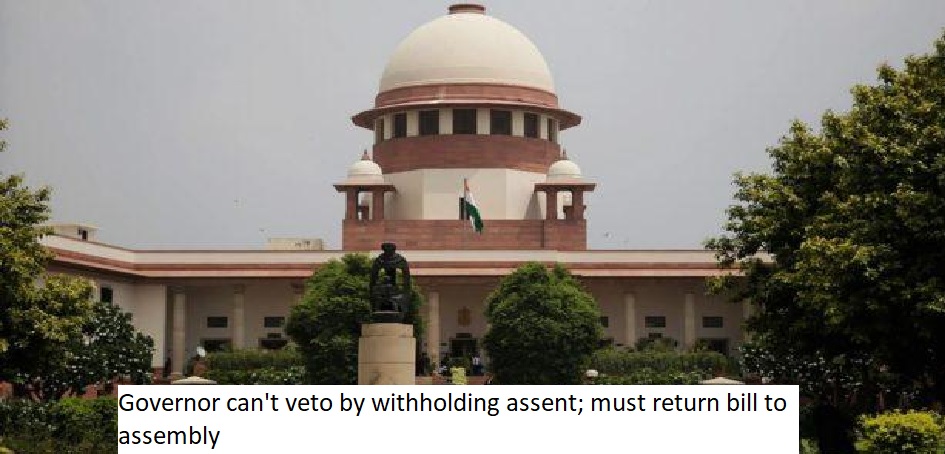


In a significant legal pronouncement, the Supreme Court has provided a crucial clarification regarding the process a Governor must follow when deciding to withhold assent to a bill. According to the court's ruling, if a Governor opts to withhold assent to a bill, the next step is to return the bill to the legislature for reconsideration. This judicial interpretation assumes particular importance due to the absence of explicit instructions in Article 200 of the Constitution regarding the appropriate course of action following a Governor's denial of assent to a bill.
Article 200 of the Constitution delineates the powers of the Governor concerning bills passed by the state legislature. It outlines three possible courses of action that a Governor may take when presented with a bill for assent. The Governor can either assent to the bill, withhold assent, or reserve the bill for the President's consideration. However, the language of Article 200 does not explicitly specify the subsequent steps to be taken if a Governor chooses to withhold assent.
The recent Supreme Court ruling fills this void by emphasizing that if a Governor decides to withhold assent, the bill must be returned to the legislature for reconsideration. This legal interpretation serves to clarify the constitutional process, providing a clear guideline for the Governor's action in such a scenario.
The Court's decision is rooted in a meticulous analysis of the constitutional framework and the intent behind Article 200. By mandating the return of the bill to the legislature, the Court ensures that the legislative body has the opportunity to revisit and potentially address any concerns or objections raised by the Governor. This iterative process aligns with the principles of checks and balances inherent in a democratic system, preventing unilateral decisions by the executive branch.
The absence of explicit guidance in Article 200 had led to ambiguity and varied interpretations over the years. The Supreme Court's intervention not only resolves this ambiguity but also strengthens the democratic underpinnings of the legislative process. It underscores the importance of collaboration between the executive and legislative branches, fostering a system where decisions are made collectively and in the best interest of the public.
Furthermore, the Court's ruling highlights the role of the judiciary in interpreting and clarifying constitutional provisions to ensure the smooth functioning of the government. In this case, the Court has effectively filled a legislative gap, providing a judicially articulated mechanism for handling the situation where a Governor withholds assent to a bill.
The decision also has broader implications for the constitutional balance of power. It reaffirms the notion that no branch of government, including the executive, can wield unchecked authority. By stipulating the requirement for the Governor to return the bill to the legislature, the Court reinforces the idea that decisions impacting the legislative process must be subject to scrutiny and collaboration.
In conclusion, the Supreme Court's ruling on the Governor's authority to withhold assent to a bill underscores the significance of legal interpretation in clarifying constitutional provisions. By requiring the Governor to return the bill to the legislature for reconsideration, the Court not only addresses a specific lacuna in Article 200 but also contributes to the broader principles of democratic governance and the separation of powers. This decision serves as a testament to the judiciary's role in upholding the constitutional framework and ensuring the effective functioning of the government.
TAGS: Supreme Court Governor Assent Bill Legislature Constitution Article 200 Withholding Reconsideration